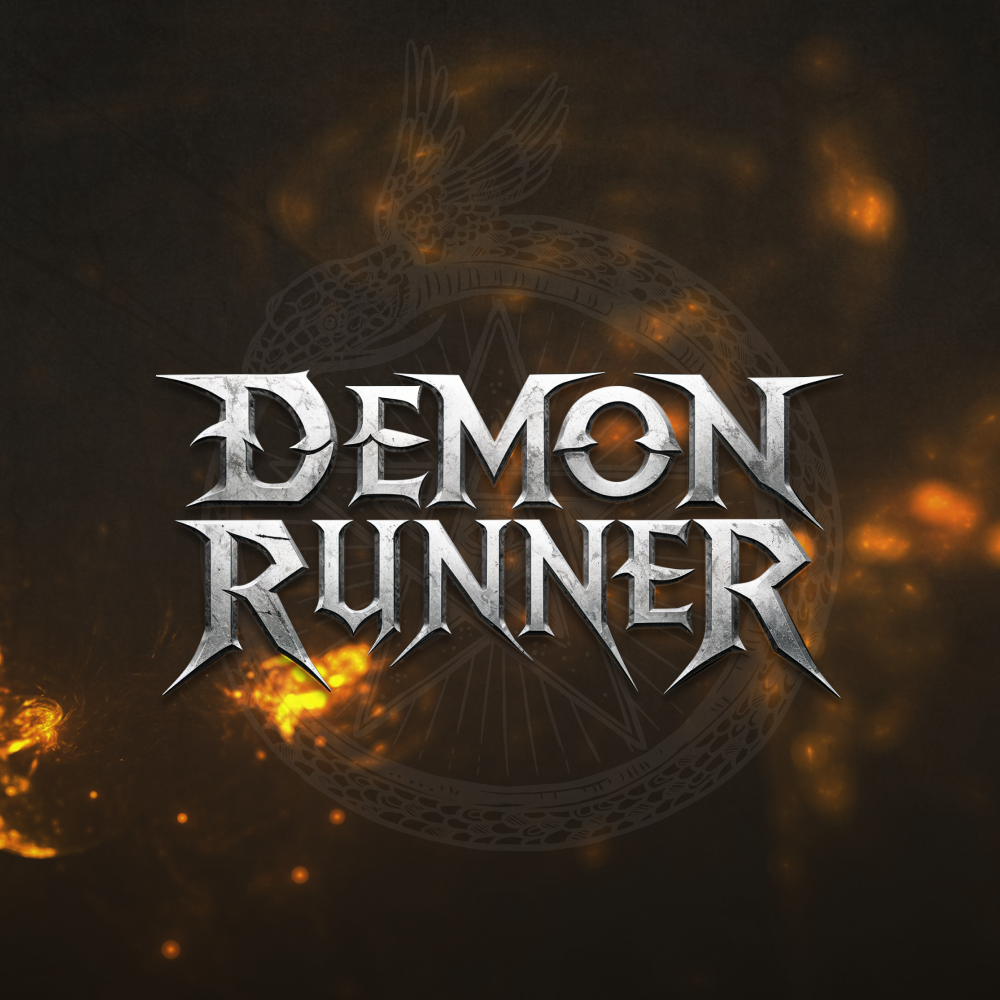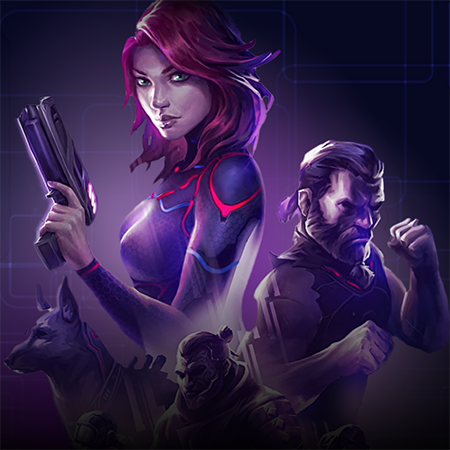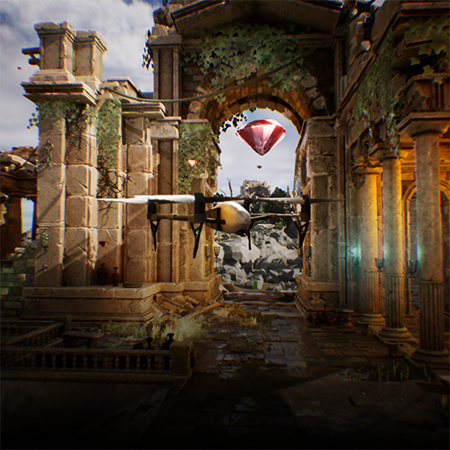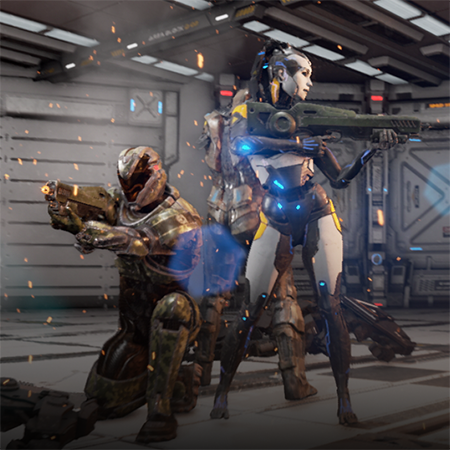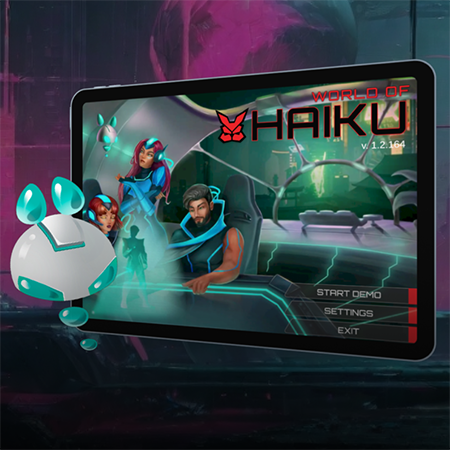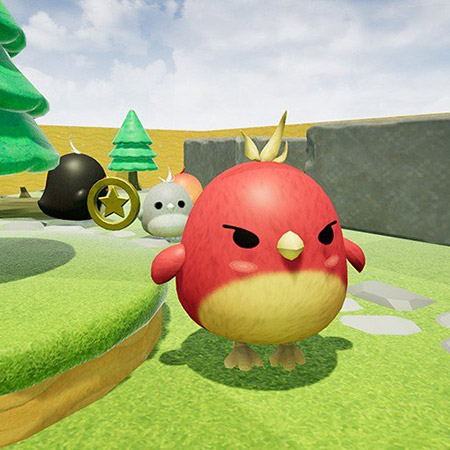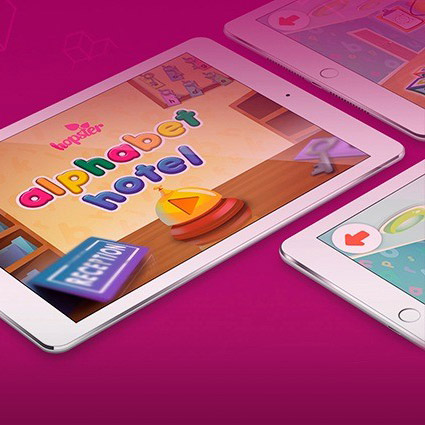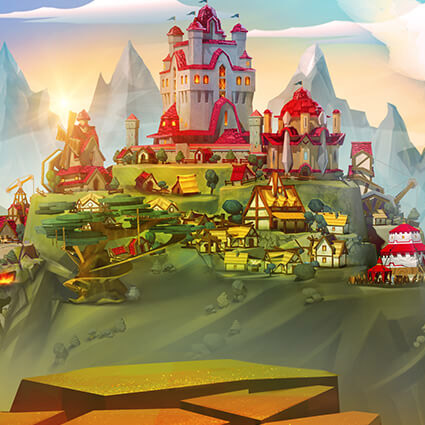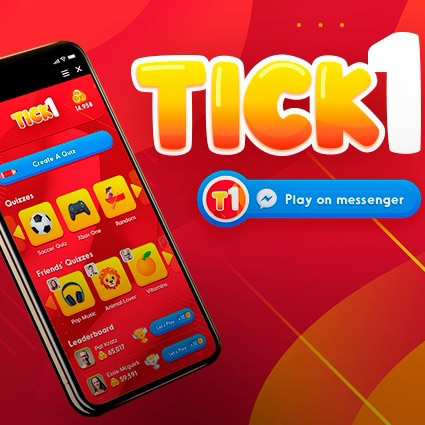Crafting a captivating game demo is crucial for showcasing your project to potential players and investors. Game development outsourcing services provide the expertise needed for a polished and engaging demo. Highlight your game's core mechanics and unique aspects, ensuring these elements stand out effectively. Collaborate with experienced professionals through outsourcing to elevate your demo with high-quality graphics, sound, and gameplay.
A well-crafted game demo builds anticipation and excitement. Every detail should be meticulously refined, from the narrative to the gameplay mechanics. Leveraging game development outsourcing services allows access to a broader range of skills and expertise, making your demo more impressive and captivating. This approach ensures you can focus on the creative aspects of your game while professionals handle the technical details, resulting in a demo that genuinely captivates your audience.
Why Business Owners Should Invest in Game Demos
Investing in game demos can provide significant benefits for business owners. A game demo is a powerful tool to attract potential players and investors, offering a glimpse into the final product's potential. Game prototyping is a critical phase in this process, allowing developers to experiment with different gameplay mechanics and features before finalizing the game. Many demo strategies mirror arcade game design concepts by focusing on short loops, instant feedback, and core feel. This not only saves time and resources but also ensures a more polished end product.
Game demos are essential for marketing and generating buzz. A well-executed demo can create excitement and anticipation among the target audience, leading to increased visibility and interest in the final game. Moreover, demos provide valuable feedback from early testers, enabling developers to refine and improve their games based on real user experiences.
Collaborating with experienced game development outsourcing services can further enhance the quality of game demos. Outsourcing provides access to a wide range of skills and expertise, ensuring high-quality graphics, sound, and gameplay. This professional touch can make a significant difference in how the demo is perceived, increasing its chances of success.
Ultimately, investing in game demos helps business owners showcase their games effectively, attract potential investors, and build a loyal player base. This strategic approach can lead to a more successful game launch and long-term profitability.
What Is a Game Demo and Why Is It Important?
A game demo is a short, playable version of a video game that showcases its core mechanics, features, and overall gameplay experience. It serves as a preview, allowing players and investors to understand what the full game will offer. The importance of game demos lies in their ability to demonstrate the potential and quality of the game, providing a compelling reason for players and investors to support the project.
3D modeling for video games plays a crucial role in creating visually appealing and immersive game demos. High-quality 3D models enhance the overall aesthetic and provide a more engaging experience for players. Detailed character designs, environments, and objects contribute to a realistic and captivating game world, making the demo more enticing.
Game demos are also crucial for gathering feedback from players. Early feedback helps developers identify any issues or areas for improvement, allowing them to make necessary adjustments before the full game is released. This iterative process ensures that the final product is well-polished and meets the target audience's expectations.
Moreover, game demos are valuable marketing tools. They can generate excitement and interest in the game, attract media attention, and build a fanbase. A successful demo can create buzz and anticipation, increasing visibility and sales upon the game's release.
Types of Game Demos
Game demos come in various types, each serving a specific purpose. Understanding these types helps developers choose the most effective way to showcase their games and engage their audience.
The first type is the vertical slice demo. This demo represents a fully polished game segment, showcasing all the core mechanics, graphics, and gameplay elements. It is often used to demonstrate the game's potential to investors and publishers, providing a clear vision of the final product.
Next is the prototype demo, which focuses on testing and refining gameplay mechanics. This type of demo may still need to finalize graphics or sound, but it is crucial for game prototyping. It allows developers to experiment with different ideas and receive early feedback, ensuring that the core gameplay is fun and engaging.
Beta demos are another type released to a select group of players for testing purposes. These demos are closer to the game's final version but still require feedback to identify and fix bugs, balance gameplay, and make final adjustments. Beta demos help build a community around the game and generate early interest.
Finally, there are free-to-play demos, which offer a portion of the game for free while encouraging players to purchase the full version. This type of demo provides a risk-free way for players to try the game, increasing the likelihood of conversion to paying customers.
By understanding and utilizing different types of game demos, developers can effectively showcase their games, gather valuable feedback, and build anticipation among their target audience.
Why to Plan Your Game Demo Beforehand?
Planning your game demo in advance ensures a focused and polished presentation. A well-thought-out demo highlights your game's best features and attracts potential players and investors. By carefully planning each element, you can showcase the unique aspects of your game and create a lasting impression.
Taking the time to plan your game demo allows you to align it with your overall strategy. This preparation ensures that every detail is refined, from graphics and sound to gameplay mechanics. An organized approach maximizes the demo's impact, making it more appealing to your target audience and increasing the chances of success.
Defining Clear Business Objectives
Clear business objectives are crucial when creating a game demo. Identifying the primary goals helps shape the demo's content and direction. Are you looking to attract investors, build a player base, or showcase a unique game mechanic? Each objective requires a different focus and approach.
Rapid game development with Unity allows for quick iterations and testing, making it easier to align the demo with your objectives. Unity's flexible tools enable developers to prototype and refine elements efficiently, ensuring the demo meets business goals.
Collaborate with your team to establish measurable objectives. Define success metrics such as user engagement, investor interest, or feedback quality. These metrics guide the demo's development and provide a clear framework for evaluating its effectiveness.
Identifying Your Target Market
Understanding your target market is vital for a successful game demo. Start by researching potential players' demographics, interests, and gaming habits. Tailoring the demo to their preferences ensures greater engagement and interest.
Video game genres play a significant role in identifying your audience. Different genres attract diverse player groups, so knowing which genre your game fits into and who enjoys that type of gameplay is essential. Analyze trends within your chosen genre to understand what players expect and enjoy.
Gather insights through surveys, forums, and social media to pinpoint your audience's preferences. Use this information to create a demo that resonates with your target market, highlighting features and mechanics they find most appealing.
Crafting a Storyline That Sells
A compelling storyline can elevate your game demo, making it memorable and engaging. Focus on creating a narrative that captivates and motivates players to explore further. The storyline should align with the game's core mechanics and enhance the overall experience.
Collaborate with your writing team to develop a storyline that integrates seamlessly with gameplay. Ensure the narrative provides context for the game's objectives and actions. Well-crafted dialogue and plot progression keep players interested and invested in the game.
Consider feedback from early testers to refine the storyline. Their insights help identify any confusing or uninteresting elements, allowing you to make necessary adjustments. A polished, engaging narrative can significantly enhance the appeal of your game demo, making it stand out to both players and investors.
Design Essentials for the Perfect Game Demo

A perfect game demo relies on key design elements significantly impacting player engagement and satisfaction. Focusing on these essentials ensures a captivating and engaging experience that stands out in the competitive gaming market. A well-designed demo highlights the game's unique features, mechanics, and visual appeal, making a strong impression on players and investors.
Attention to detail in these core areas transforms a simple demo into an immersive experience, capturing the audience's interest and encouraging further game exploration. By prioritizing these design essentials, developers can create a demo that effectively showcases the potential and quality of the entire game.
Gameplay Mechanics that Engage
Engaging gameplay mechanics are vital for capturing and retaining player interest. Begin by defining the core mechanics that make your game unique. Ensure these mechanics are intuitive and provide immediate feedback to players.
The elements of engaging gameplay mechanics include:
- Clear objectives. Set clear goals for players to achieve, giving them a sense of direction and purpose.
- Smooth controls. Design controls that are responsive and easy to learn, allowing players to focus on the game.
- Balanced difficulty. Adjust the difficulty level to challenge players without causing frustration, keeping them motivated to progress.
- Rewarding progression. Implement a rewarding system that acknowledges player achievements, encouraging continued play.
Testing your gameplay mechanics with a diverse group of players helps identify areas for improvement. Their feedback provides valuable insights into what works and what needs adjustment. Regular iterations and refinements ensure that your gameplay mechanics remain engaging and enjoyable.
Balancing Visuals and Performance for Impact
Balancing visuals and performance is crucial for creating an impactful game demo. High-quality graphics attract attention, but they should maintain the game's performance. Striking the right balance ensures a smooth and enjoyable experience.
Start by optimizing assets for performance. Use efficient models, textures, and shaders that maintain visual quality without taxing the hardware. Employ techniques such as level of detail (LOD) and texture streaming to manage resources effectively.
Tips for balancing visuals and performance:
- Optimize assets. Use efficient models and textures to maintain quality without compromising performance.
- Manage resources. Implement techniques like LOD and texture streaming to balance quality and performance.
- Test across devices. Ensure the demo runs smoothly on various hardware configurations to reach a wider audience.
Collaborate with your development team to monitor performance metrics throughout the demo creation process. Address any performance issues early, ensuring that the final product offers a seamless experience. High-quality visuals combined with smooth performance create a lasting impression on players and investors.
User-Friendly Interfaces for Wider Appeal
User-friendly interfaces enhance the accessibility and appeal of your game demo. A well-designed interface guides players intuitively, allowing them to focus on the gameplay rather than struggling with controls.
Characteristics of a user-friendly interface:
- Intuitive design. Use familiar icons and layouts that players can easily understand and navigate.
- Consistent feedback. Provide clear feedback for player actions, ensuring they know the results of their interactions.
- Customizable settings. Allow players to adjust settings such as controls, graphics, and audio to suit their preferences.
Incorporate usability testing into the development process. Observing how players interact with the interface highlights areas for improvement. Based on their feedback, make necessary adjustments to enhance usability.
Collaborate with UI/UX designers to create visually appealing and functional interfaces. A user-friendly interface not only attracts a wider audience but also enhances the overall player experience, making your game demo more effective and memorable.
Core Features Implementation for Your Game Demo
Implementing core features in your game demo is essential for showcasing its potential. Highlighting unique mechanics, high-quality visuals, and engaging narratives ensures that your demo captivates players and investors.
Must-Have Features for Market Readiness
To ensure market readiness, your game demo must include essential features that demonstrate the game's full potential. Highlighting unique gameplay mechanics that set your game apart from competitors is crucial. High-quality graphics and sound design enhance the overall experience, making the demo more appealing to players and investors. Including a well-crafted tutorial can guide new players through the basics, ensuring they understand the core mechanics quickly.
Incorporate a strong narrative element that engages players emotionally and motivates them to continue exploring the game. Multiplayer or co-op modes can add replay value, making the demo more attractive to a broader audience. Accessibility features, such as customizable controls and subtitles, ensure that as many people as possible can enjoy your game. By focusing on these must-have features, you can create a market-ready game demo that stands out in a crowded market.
Smooth Game Flow
A smooth game flow is essential for maintaining player engagement throughout the demo. Start by designing intuitive level transitions that keep players immersed in the game world without interruptions. Ensure the game's pacing is well-balanced, providing a mix of challenging and rewarding moments that keep players motivated to progress.
Incorporate clear and concise instructions within the game to guide players without overwhelming them. Consistent feedback for player actions helps them understand the consequences of their decisions and maintain a sense of control. Implement checkpoints or save points at strategic locations to prevent frustration from losing progress.
Optimize the game's performance to avoid lag or crashes, ensuring a seamless experience. Regularly testing the game flow with real users can provide valuable insights and highlight improvement areas. A smooth game flow enhances the player experience, making your demo more engaging and enjoyable.
Rigorous Testing and Debugging
Rigorous testing and debugging are critical to delivering a polished and reliable game demo. Conduct thorough playtesting sessions to identify bugs, glitches, or performance issues. Utilize both automated and manual testing tools to cover a wide range of scenarios and ensure comprehensive coverage.
Encourage feedback from a diverse group of testers, including experienced gamers and newcomers, to gain different perspectives on the demo's performance and usability. Address any issues promptly and document the changes made for future reference. Consistent testing throughout the development process helps maintain the quality and stability of the game.
Perform stress tests to evaluate how the game handles high loads or unexpected inputs. Ensuring the demo runs smoothly under various conditions is essential for providing a reliable experience to all users. By dedicating sufficient time and resources to testing and debugging, you can deliver a game demo that is both polished and enjoyable, leaving a lasting impression on players and investors.
Why Visual Appeal and Graphics Are Crucial
Visual appeal and graphics significantly impact player engagement, making them crucial for any game demo's success. High-quality visuals are often the first aspect that catches a player's eye, drawing them into the game and sparking their interest. Effective use of color, detail, and design can create a compelling visual experience that sets the tone for the entire game.
Moreover, well-executed graphics enhance the overall immersion, making players feel more connected to the game world. This connection can lead to longer play sessions and increased enjoyment, as players are more likely to explore and interact with a visually rich environment. In addition, stunning graphics can differentiate a game from its competitors, giving it a unique edge in a crowded market.
Investing in top-tier graphics and visual design ensures that your game demo attracts attention and retains it. Players are likely to remember and talk about a game that offers an exceptional visual experience, leading to word-of-mouth promotion and increased interest. Overall, prioritizing visual appeal and graphics in your game demo is a strategic move that can significantly enhance its success.
Utilizing High-Quality Graphics
High-quality graphics play a pivotal role in capturing players' attention and enhancing their overall experience. Leveraging the best game engines ensures that your game demo showcases top-tier visuals. Engines like Unreal Engine, Unity, and CryEngine provide powerful tools for creating stunning graphics.
The benefits of high-quality graphics:
- First impressions matter. Players are more likely to be drawn to games with impressive visuals.
- Immersion. Detailed graphics create a more immersive experience, making players feel part of the game world.
- Competitive edge. High-quality visuals can set your game apart from others in the market.
- Collaborate with skilled artists and designers to develop detailed textures, realistic lighting, and lifelike character models. These elements contribute to a polished and professional appearance.
Regular performance optimization ensures that the game runs smoothly without compromising visual quality.
The Power of Animations and Effects
Animations and effects add depth and dynamism to your game demo. Well-crafted animations bring characters and environments to life, enhancing player immersion. Effects like particle systems, dynamic lighting, and realistic physics can make the game world feel more vibrant and interactive.
High-quality animations and effects enhance realism, making the game world more believable. They convey character emotions and actions, adding narrative depth. Dynamic effects keep players engaged and entertained, offering a more satisfying gameplay experience.
Utilize the best game engines to implement advanced animation techniques and visual effects. Engines like Unreal Engine and Unity offer robust tools for creating fluid animations and stunning visual effects. Regular updates and refinements based on player feedback maintain high standards.
Consistent Aesthetic Vision
A consistent aesthetic vision is vital for creating a cohesive and memorable game demo. Ensuring that all visual elements align with the game's theme and style enhances the player experience. Collaborate with your team to establish a clear visual direction from the outset.
A unified art style that reflects the game's theme should be chosen and maintained throughout development. Selecting a color palette that compliments the art style enhances visual appeal. Establishing design guidelines for character design, environment details, and UI elements ensures consistency.
Regularly reviewing visual components helps maintain adherence to the established aesthetic vision. Consistent visuals not only make the game more attractive but also help players immerse themselves in the game world. A unified aesthetic creates a game demo that is visually striking and memorable.
Make a game demo with Game-Ace — make this first step!
The Role of Sound and Music in Game Demo Design
Sound and music are crucial elements in game demo design, significantly enhancing the player's experience. Well-chosen audio can set the mood, highlight key moments, and immerse players in the game world. Effective use of sound and music can make a game demo more memorable and engaging.
1. The Right Background Music
Choosing the right background music is essential for setting the tone of your game demo. Music should complement the game's theme and enhance the emotional impact of the gameplay. For action-packed scenes, energetic and intense music can heighten excitement. In contrast, calm and serene tracks are suitable for more peaceful or exploratory moments.
Consider the pacing of the music to match the gameplay flow. Dynamic tracks that adapt to the player's actions can create a more immersive experience. Collaborating with composers who understand the game's vision ensures that the music aligns perfectly with the game's narrative and atmosphere.
Test different music tracks with your target audience to gather feedback. Their reactions can provide valuable insights into how the music affects their experience. The right background music can transform a game demo, making it more engaging and emotionally resonant.
2. Immersive Sound Effects
Immersive sound effects are vital for creating a realistic and engaging game environment. Each sound effect should be carefully chosen to enhance the player's sense of presence within the game. Sounds like footsteps, weapon discharges, and environmental noises contribute to the overall atmosphere.
High-quality sound effects help players identify actions and events within the game, providing essential auditory cues. For instance, distinct sounds for different types of surfaces can help players navigate through the game world more effectively. Detailed sound design can make the difference between a good game and a great one.
Ensure that sound effects are well-balanced and do not overwhelm the gameplay. They should complement the visual elements and music, creating a cohesive audio experience. Regular testing and adjustments based on player feedback are crucial to achieving the right balance and impact.
3. Atmospheric Audio for the Best Experience
Atmospheric audio plays a significant role in enhancing the overall gaming experience. Ambient sounds, such as the rustling of leaves, distant animal calls, or the hum of machinery, can add depth and realism to the game world. These subtle audio elements create a more immersive environment for players.
A well-designed audio atmosphere can evoke emotions and set the stage for various in-game scenarios. For example, a dark, eerie environment might benefit from low, haunting background sounds, while a bustling cityscape requires a mix of lively, urban noises. Tailoring the audio to match the game's setting ensures a more cohesive experience.
Collaborate with sound designers who specialize in creating atmospheric audio. Their expertise can help craft an auditory experience that perfectly complements the game's visuals and gameplay. Consistent audio quality across all elements of the game demo enhances immersion and makes the demo more engaging for players.
Enhancing User Experience
Enhancing the user experience is vital for creating a memorable and engaging game demo. Key aspects include intuitive controls, accessibility features, and incorporating user feedback to improve the game continuously.
Ensuring Intuitive Controls
Intuitive controls are essential for making your game demo accessible and enjoyable for players. Controls should be simple to learn yet provide depth for advanced gameplay. Start by designing a control scheme that feels natural and responsive. Test the controls on various input devices, including controllers, keyboards, and touchscreens, to ensure compatibility and ease of use across platforms.
Three key steps to ensure intuitive controls:
- Test with diverse players. Involve both experienced and novice players to gather comprehensive feedback.
- Iterate based on feedback. Make adjustments based on player input to refine the control scheme.
- Provide tutorials. Offer in-game tutorials or tooltips to help players quickly understand the controls.
Smooth and responsive controls enhance player immersion, allowing them to focus on the game's content without struggling with the interface.
Incorporating Accessibility Features
Incorporating accessibility features broadens the appeal of your game demo and ensures that more players can enjoy it. Start by understanding the needs of players with disabilities. Features like customizable controls, subtitles, and colorblind modes can significantly enhance accessibility.
Consult with accessibility experts or organizations to identify best practices and specific needs. Implementing features such as text-to-speech, adjustable font sizes, and audio cues can make the game more inclusive. Regularly testing these features with a diverse group of players helps identify areas for improvement.
By prioritizing accessibility, your game demo becomes more welcoming to all players, demonstrating a commitment to inclusivity and enhancing overall user satisfaction.
Leveraging User Feedback for Improvement
User feedback is invaluable for refining and improving your game demo. Actively seek feedback from players through surveys, forums, and playtesting sessions. Analyze this feedback to identify common issues and areas for enhancing the game.
Steps to effectively leverage user feedback:
- Gather comprehensive feedback. Use various channels to collect input from a broad audience.
- Analyze the data. Identify patterns and prioritize issues based on player comments.
- Implement changes. Make iterative improvements to address feedback and enhance the game.
Continuously incorporating user feedback ensures that your game demo evolves and meets player expectations. This iterative process improves the demo's quality and builds a loyal community of players who feel valued and heard.
Marketing Strategies for Game Demos
Effective marketing strategies are essential for promoting your game demo and reaching a wider audience. Focus on building a pre-launch buzz, leveraging social media and influencers, and creating promotional content that resonates with potential players.
Building a Pre-Launch Buzz
Creating excitement before the launch of your game demo is crucial for attracting attention and generating interest. Start by announcing your game early and providing regular updates on its development. Teasers, trailers, and behind-the-scenes content can engage your audience and keep them interested.
Engage with gaming communities and forums to spread the word. Participating in discussions and sharing exclusive content can build anticipation. Offer early access to a select group of players and encourage them to share their experiences. Positive word-of-mouth can significantly boost your demo's visibility.
Host live events or webinars where you showcase the game and answer questions from potential players. This direct interaction can strengthen your connection with your audience and create a sense of community around your game.
Social Media and Influencer Marketing
Social media platforms are powerful tools for promoting your game demo. Create profiles on popular platforms like Twitter, Instagram, and Facebook, and share regular updates, images, and videos of your game. Engaging content and consistent posting can keep your audience interested.
Influencer marketing can amplify your reach. Identify influencers in the gaming industry who align with your game's target audience — partner with them to showcase your demo through live streams, reviews, or social media posts. Influencers can provide authentic endorsements that resonate with their followers.
Track engagement metrics to understand what type of content works best and adjust your strategy accordingly. Respond to comments and messages to build a relationship with your followers. A robust social media presence can drive significant traffic to your game demo.
Creating Promotional Content that Resonates
Crafting promotional content that resonates with your audience is essential for a successful game demo launch. Focus on creating compelling visuals, engaging trailers, and informative blog posts that highlight the unique aspects of your game.
Start with a captivating trailer that showcases your game's best features. Use high-quality graphics, exciting gameplay footage, and a gripping soundtrack to capture attention. A well-edited trailer can make a strong first impression and encourage viewers to try the demo.
Create detailed blog posts or articles that provide insights into the game's development, storyline, and characters. Sharing the creative process can make players feel more connected to the game. Use testimonials from early testers or quotes from game developers to add credibility.
Distribute press releases to gaming news sites and blogs to reach a broader audience. Offering exclusive interviews or first looks can entice media outlets to cover your game. Well-crafted promotional content can significantly enhance your game's visibility and attract more players to your demo.
Insights into Launching Your Game Demo
Launching your game demo effectively involves selecting the right platforms, simplifying the download process, and providing robust post-launch support. These steps ensure maximum reach and user satisfaction.
Selecting the Best Platforms for Distribution
Choosing the right platforms for distributing your game demo is crucial for reaching your target audience.
- Start by identifying where your potential players spend their time. Popular platforms like Steam, Itch.io, and the Epic Games Store offer extensive reach and established user bases. Console platforms like PlayStation Store and Xbox Live can be effective, especially if your game targets console players.
- Evaluate each platform's requirements and submission processes. Some platforms may offer promotional opportunities or early access programs that boost visibility.
- Consider the costs associated with each platform and the potential return on investment. Diversifying distribution across multiple platforms can increase your demo's exposure and attract a wider audience.
Simplifying the Download Process
A smooth and straightforward download process is essential for maximizing demo downloads.
- Start by providing clear instructions and prominent download links on your website and social media channels. Ensure the download size is reasonable to avoid discouraging potential players with limited bandwidth.
- Offer multiple download options to cater to different user preferences. Direct downloads, torrent links, and platform-specific installers can accommodate various needs. Make sure the installation process is quick and hassle-free, with minimal steps required from the user.
- Provide detailed FAQs and troubleshooting guides to assist players who encounter issues during the download or installation. Clear, concise, and accessible documentation can reduce frustration and improve user experience.
Providing Post-Launch Support
Robust post-launch support is critical for maintaining player engagement and addressing any issues that arise after the demo's release.
- Establish multiple channels for players to reach out with questions or problems, such as email support, social media, and community forums. Respond promptly to feedback and inquiries to show that you value player input.
- Monitor feedback closely to identify common issues and areas for improvement. Regular updates and patches can address bugs, enhance performance, and introduce new features based on player suggestions. Communicate these updates clearly to keep your community informed and engaged.
- Foster a positive community around your game demo by encouraging discussions and sharing user-generated content. Engaging with your audience helps build loyalty and can provide valuable insights for future development.
Continuous post-launch support demonstrates your commitment to delivering a high-quality experience and can significantly impact the success of your game demo.
Build a Solid Game Demo with Game-Ace

Partnering with Game-Ace ensures a professional, engaging game demo highlighting your game's potential. As a custom game development studio, we offer tailored solutions to your needs. Game-Ace specializes in creating high-quality, captivating game demos that attract players and investors. Our team of experienced developers, artists, and designers collaborates closely with you to bring your vision to life. We deliver demos that stand out in the competitive gaming market by leveraging cutting-edge technology and industry best practices.
Choosing Game-Ace means benefiting from our extensive experience and commitment to excellence. Our custom game development services ensure your demo is visually stunning, technically sound, and user-friendly. We handle everything from initial concept to final polish, providing a seamless process and a top-tier result.
Contact us to create a game demo that genuinely captivates your audience. With Game-Ace, you can showcase your game's full potential and set the stage for success.
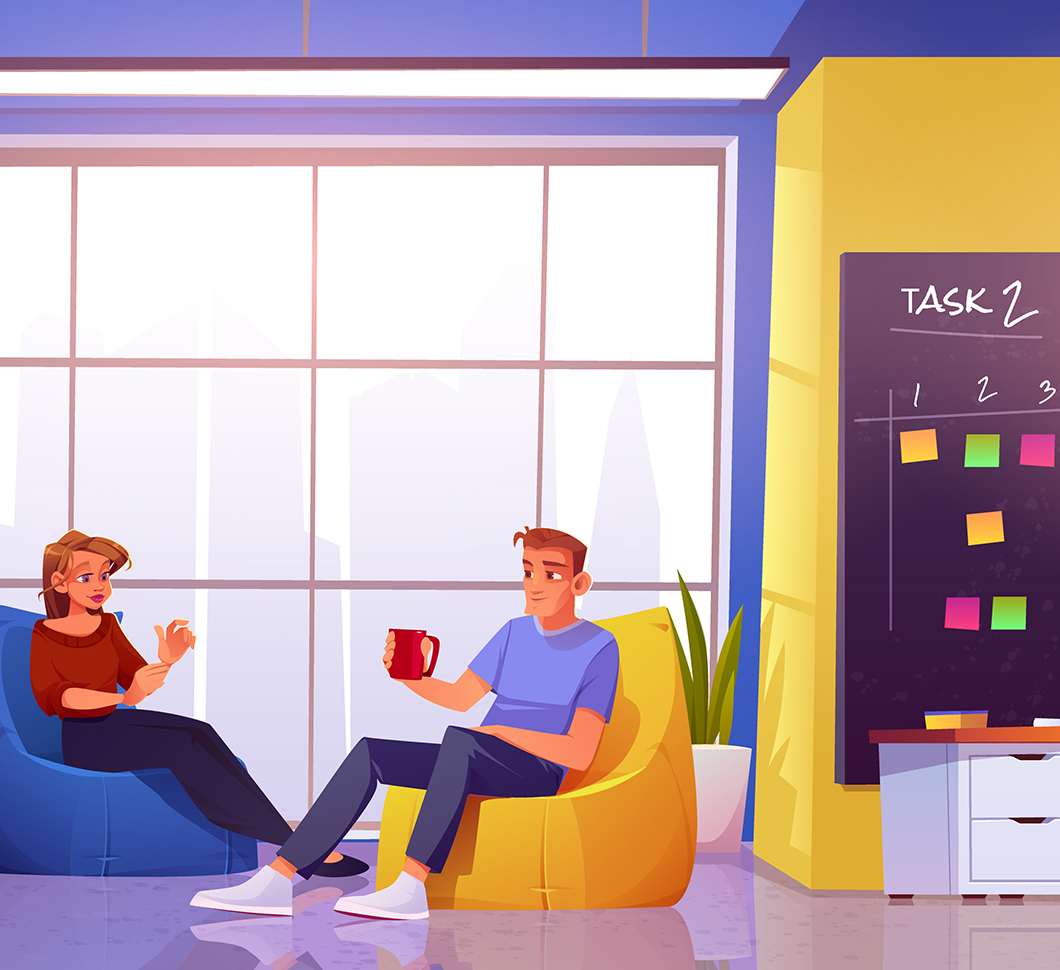 Key Trends Shaping Gamification in Recruitment for 2026 and Beyond
Key Trends Shaping Gamification in Recruitment for 2026 and Beyond  How to Create Crypto Casino Games the Right Way
How to Create Crypto Casino Games the Right Way  AI Recruitment Games: From Real-Time Assessments to Better Hiring Outcomes
AI Recruitment Games: From Real-Time Assessments to Better Hiring Outcomes  Games for Business: Proven Strategies for Engagement and Growth
Games for Business: Proven Strategies for Engagement and Growth  How to Design Learning Games for Kids That Teach Real-World Skills
How to Design Learning Games for Kids That Teach Real-World Skills 










